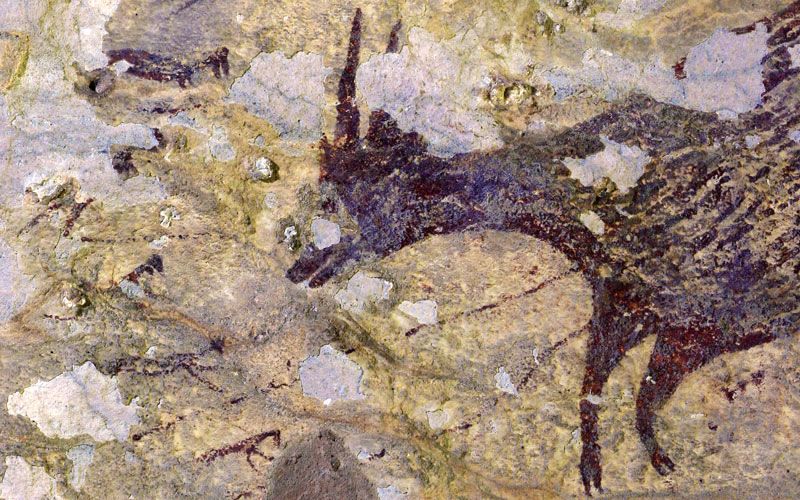The history of art is being rewritten after archaeologists working in Indonesia’s Sulawesi island says a cave-wall depicting pigs and buffaloes in what may be a hunting scene is the world’s oldest recorded story, dating back at least 43,900 years.
The painting is a 4.5 meter-long rock art panel, featuring reddish-brown forms which appear to be human-like figures hunting local animal species of at least two pigs and four dwarf buffaloes. The findings, found in a cave known as Leang Bulu’ Sipong 4 in South Sulawesi, are described in the journal Nature and published online yesterday.
Previously, the long-held story was that humans began to paint in caves in Europe. But after a group of scientists started dating cave paintings in Indonesia several years ago, they were found to be thousands of years older.
“I’ve never seen anything like this before. I mean, we’ve seen hundreds of rock art sites in the region, but we’ve never seen anything like a hunting scene,” said Adam Brumm, an archaeologist at Australia’s Griffith University and one of the authors of the article in Nature.
Authors of the study also suggest that the painting in Sulawesi might have mythological or supernatural connotations, and not necessarily a depiction of real human experience.
“Whatever the case, it seems evident that this complex scene, with its multiple interacting subjects, is rich in narrative content,” the study said.
The artwork was dated using a technique called uranium series dating, which involves analyzing layers of the calcite ‘popcorn’ that formed on top of the painting over the years and the material underneath the art itself.
Last year, a wall painting found in East Kalimantan depicting a cow was dated at least 40,000 years old, making it the world’s oldest piece of figurative art at the time.
However, Brumm told NPR that even though Indonesia is emerging as an important location for early art, the paintings are rapidly deteriorating.
“It is such a huge and important part of the human story. Yet it’s literally crumbling away before our eyes,” Brumm said, adding that it’s possible higher temperatures in the caves due to climate change are harming the art.




